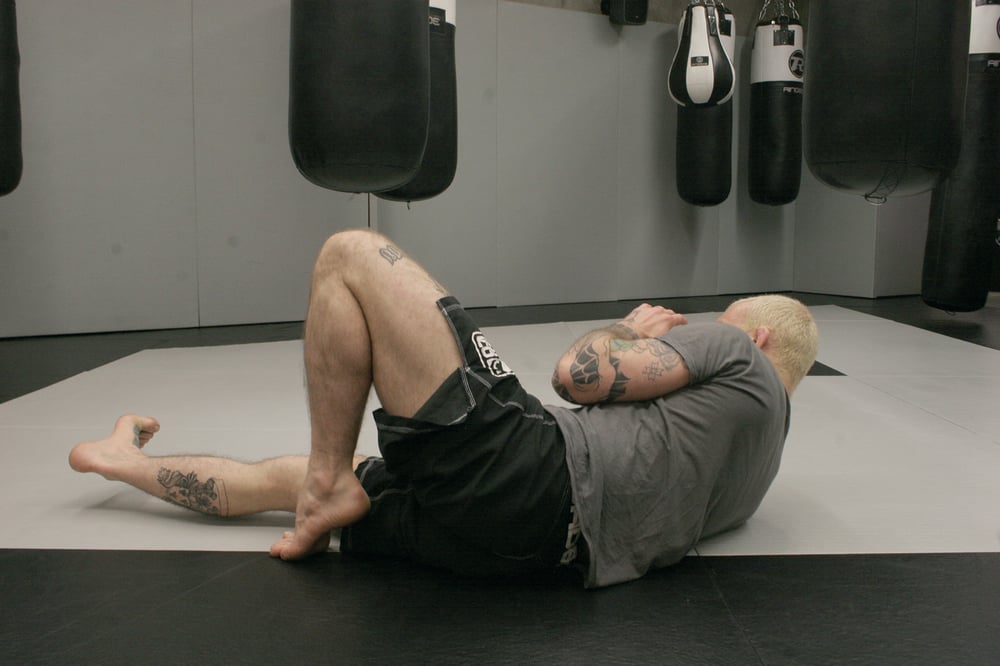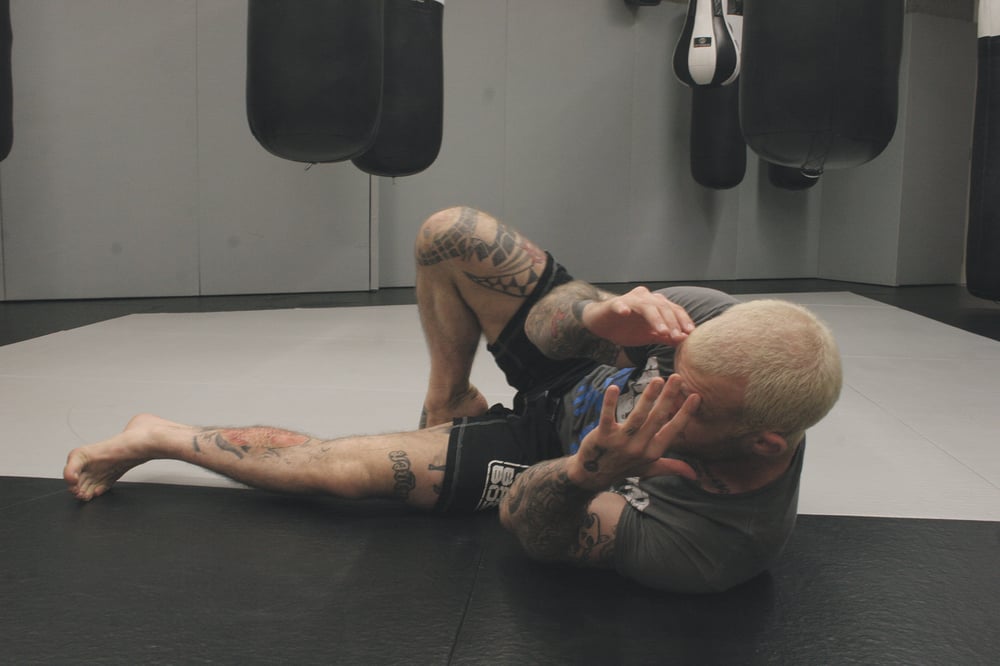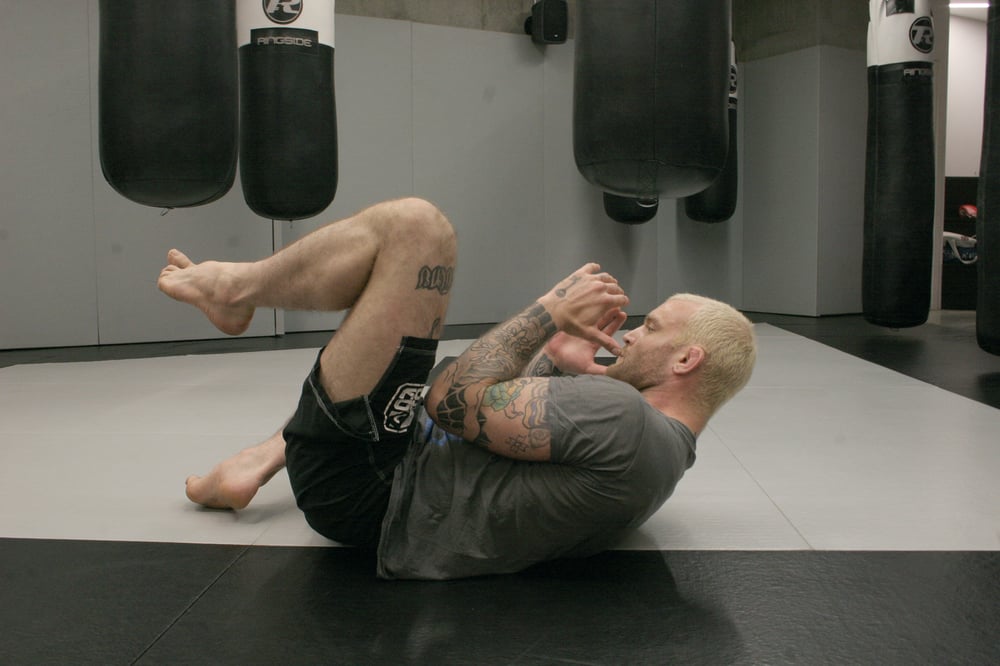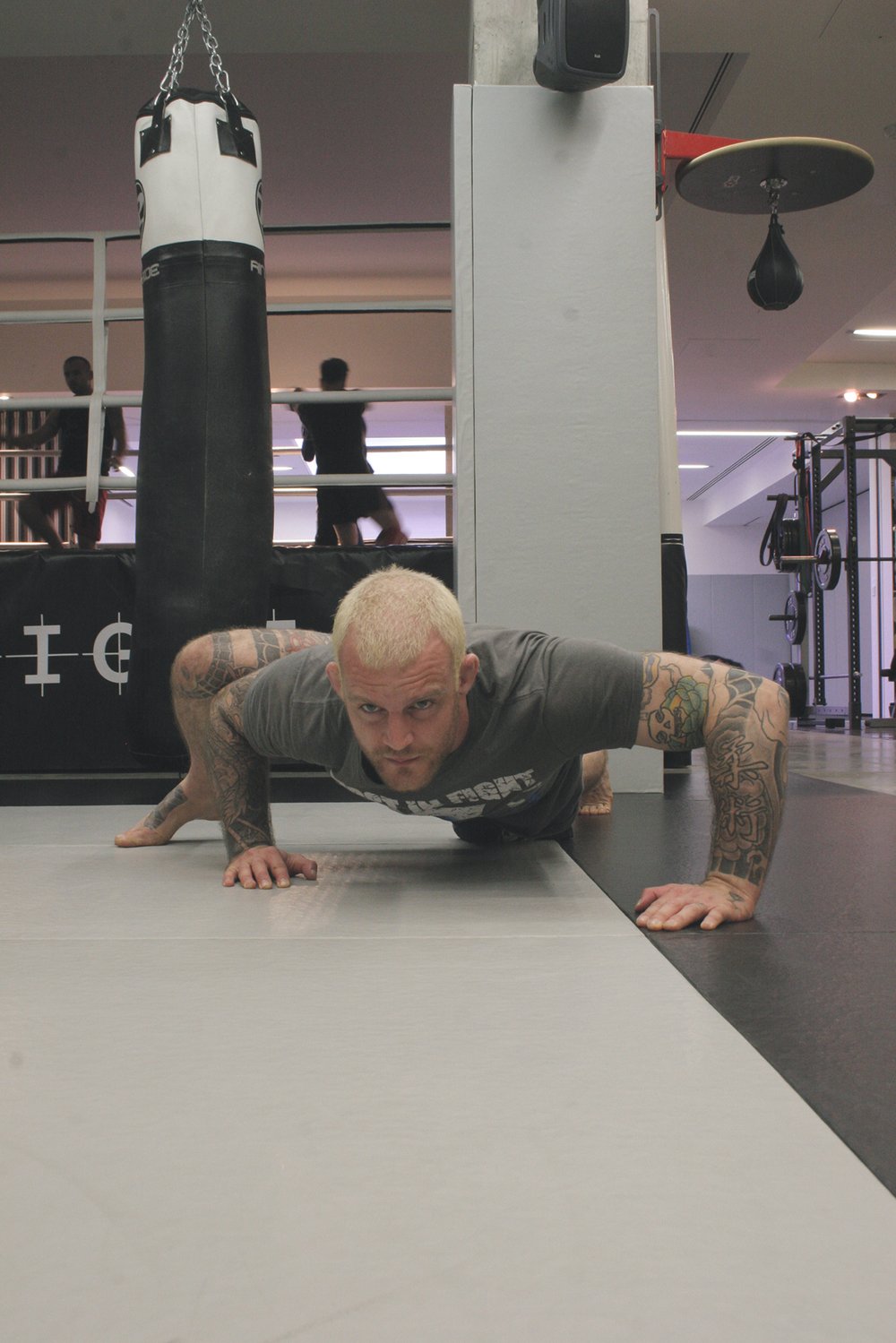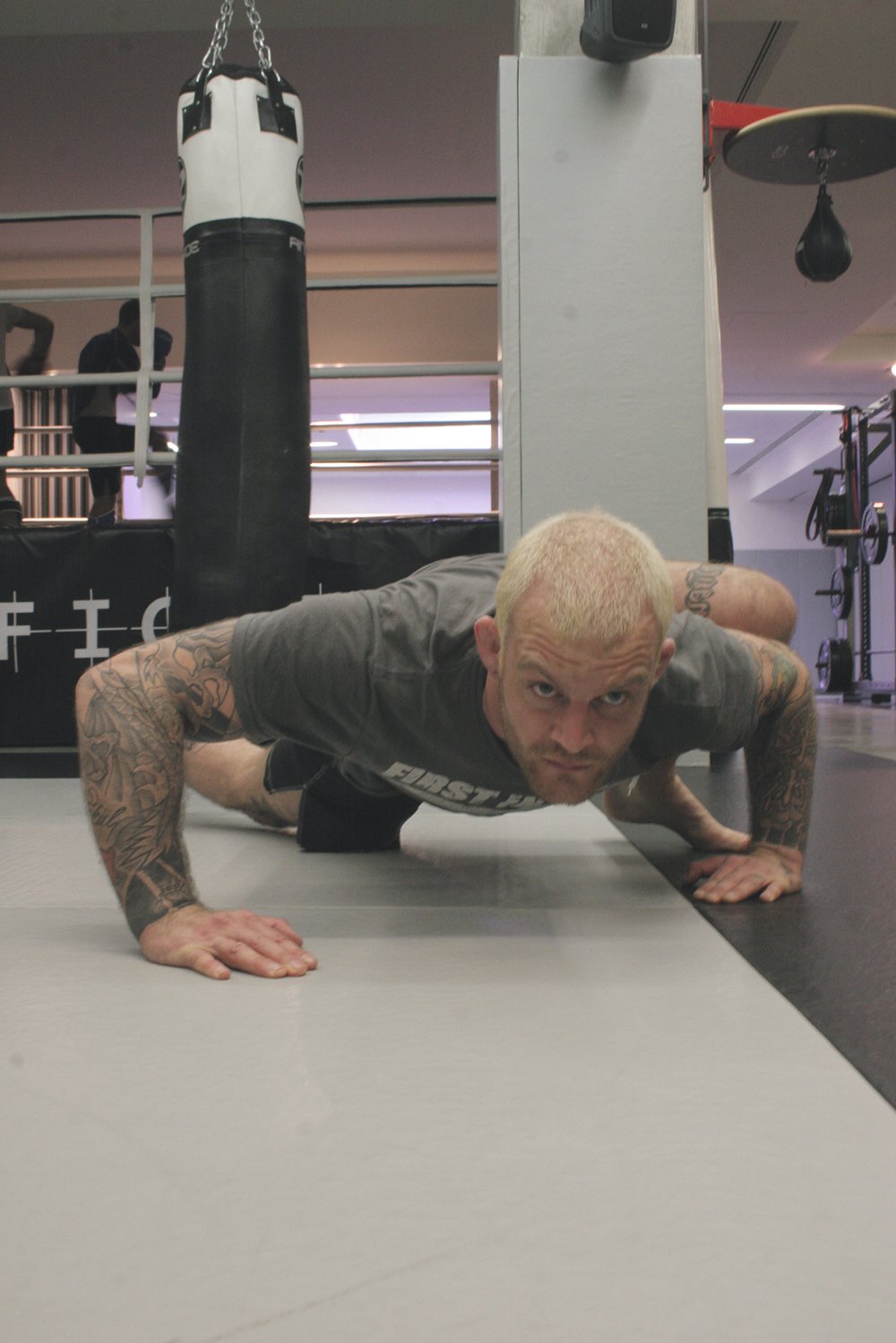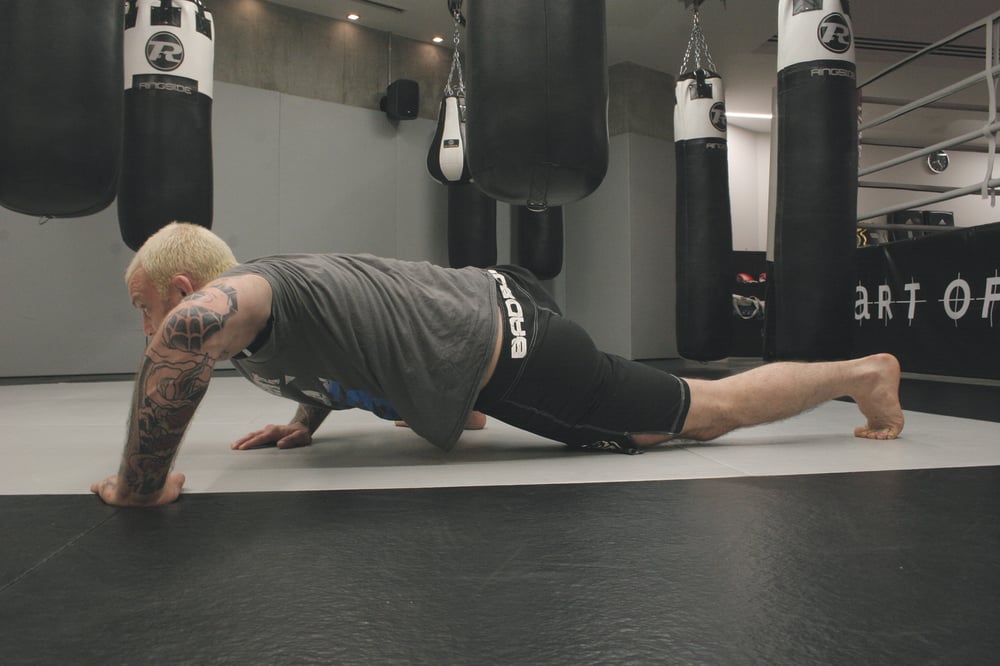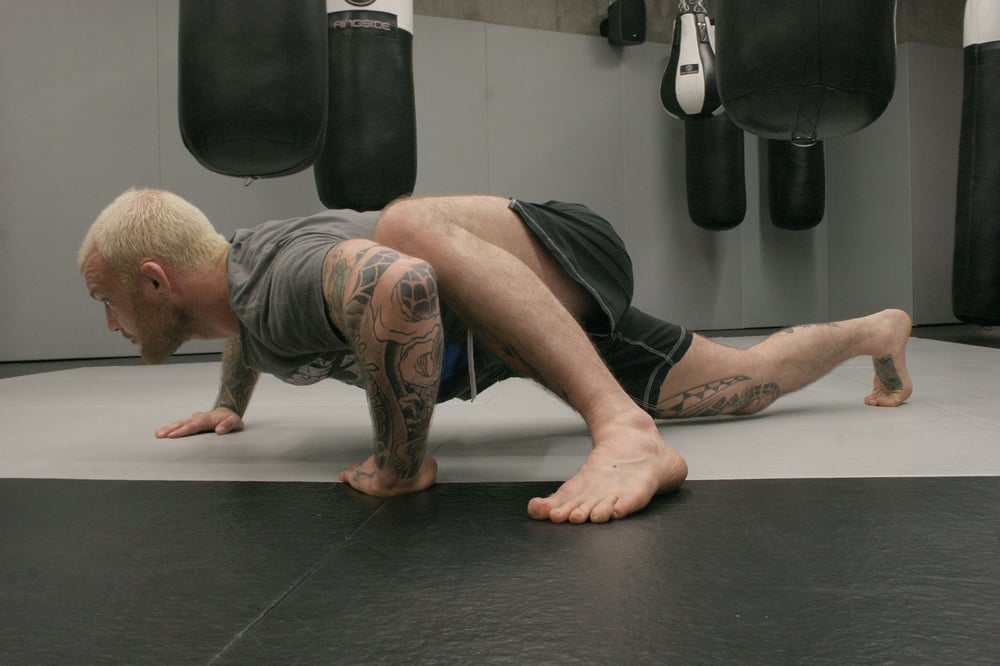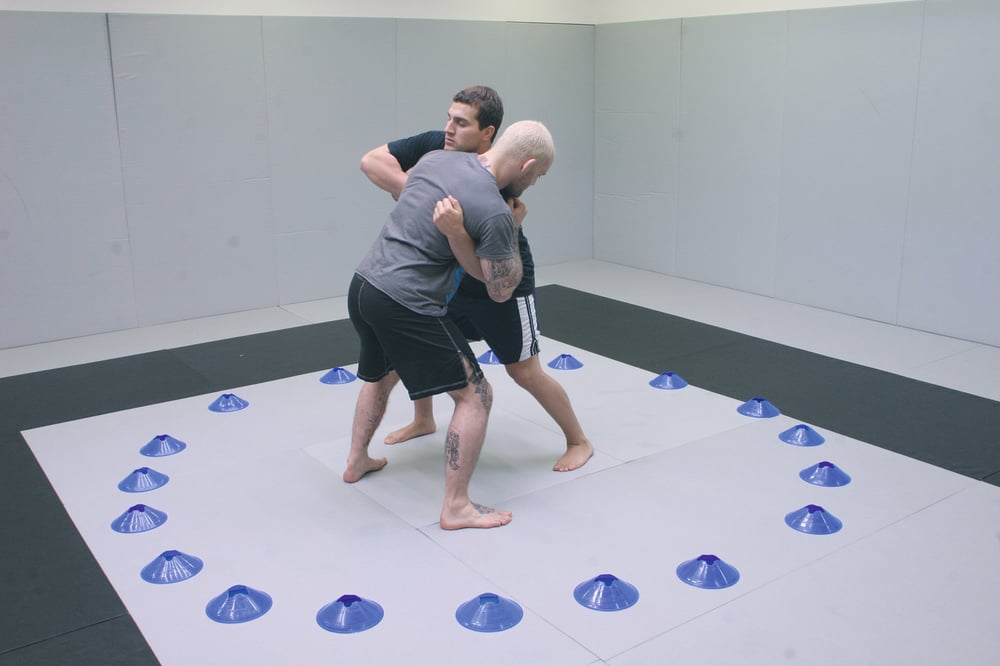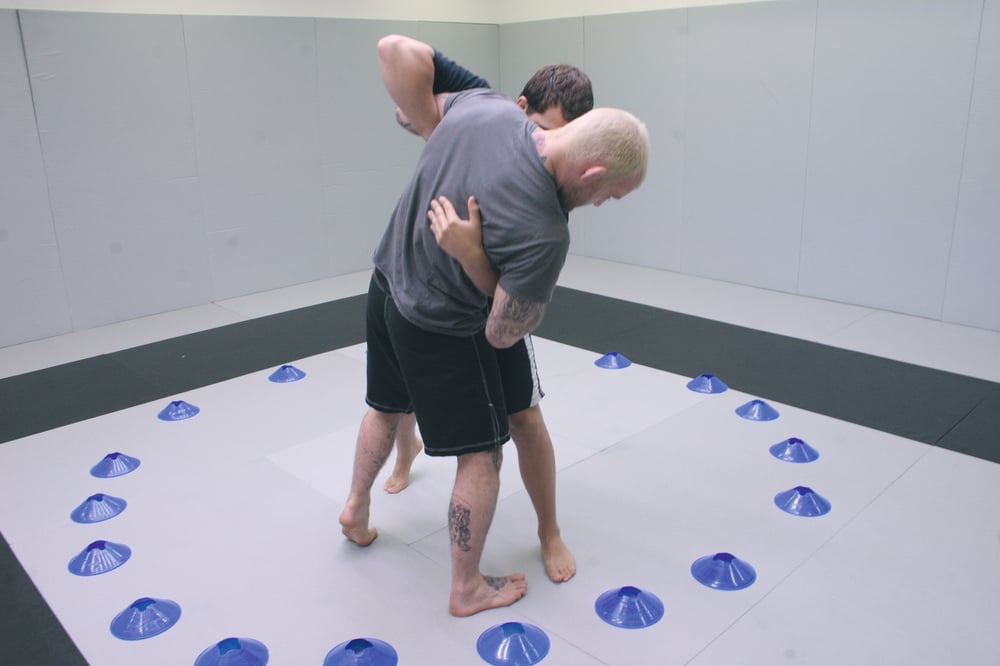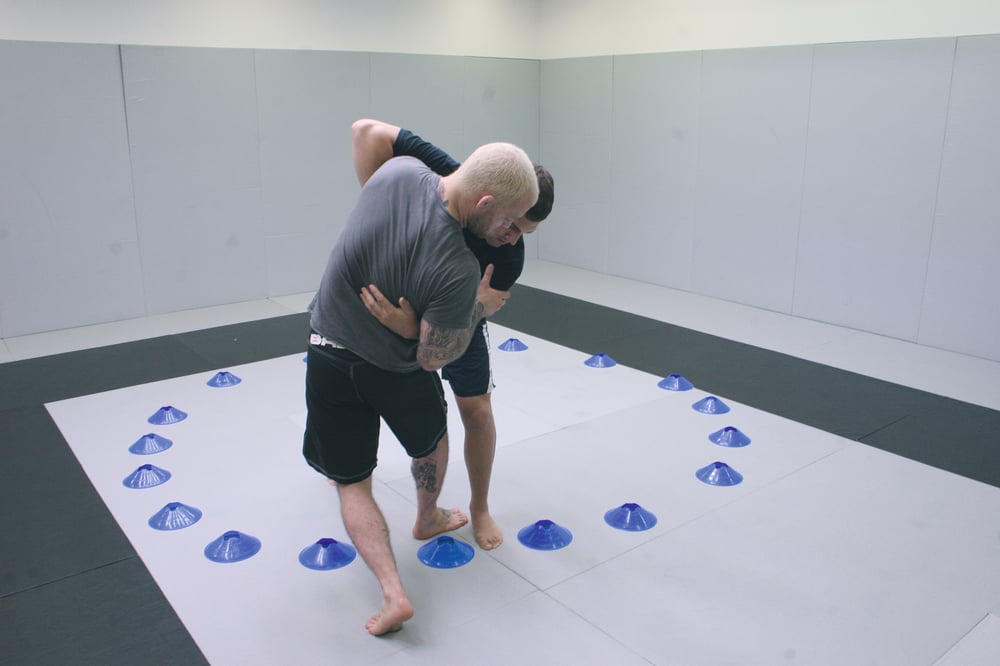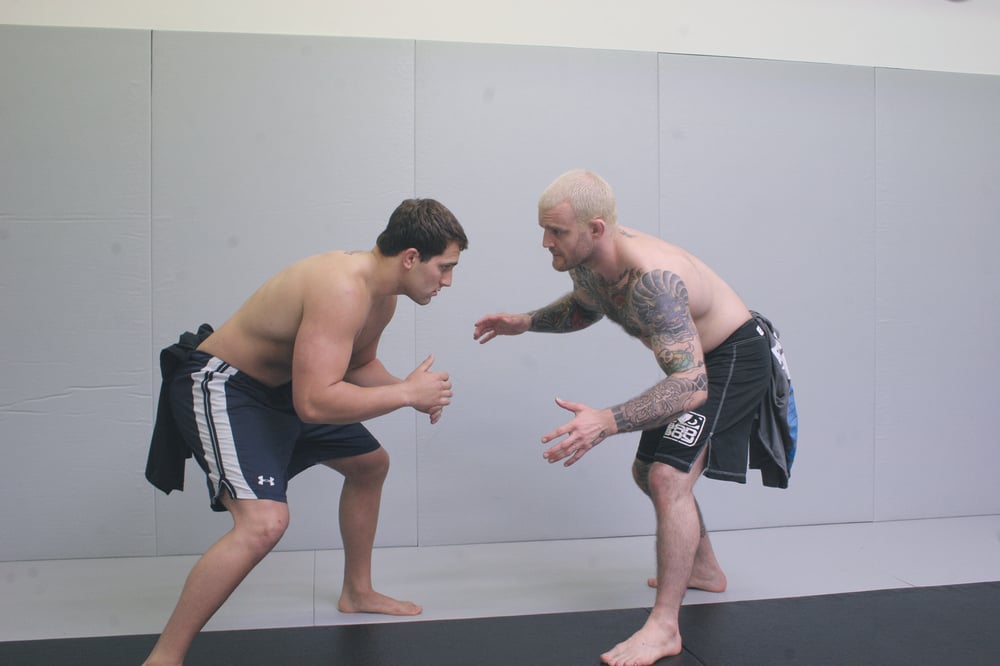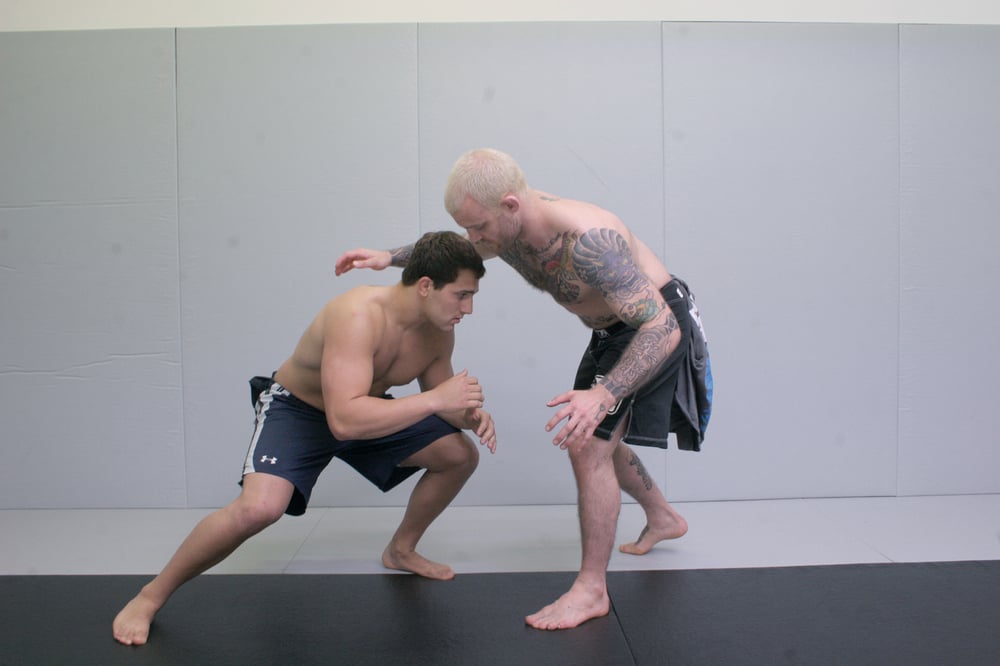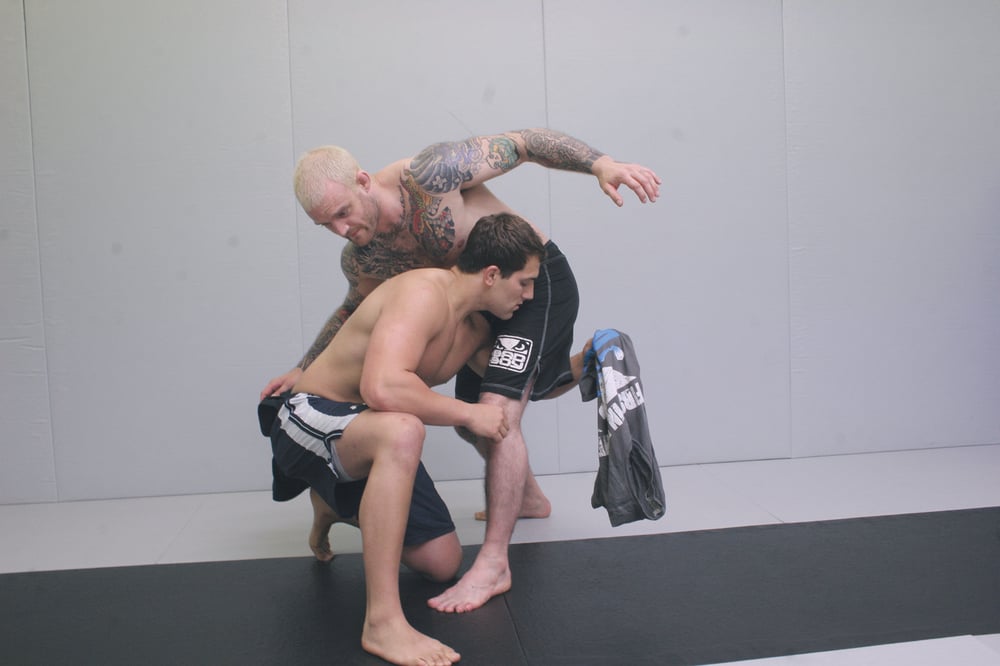
Issue 078
August 2011
Practice makes perfect. Our new skills and drills section helps you stimulate your game and breathes life into your regular regime.
SOLO MOVEMENT DRILLS
The goal of grappling is to exert physical control over someone else, but if you can’t properly control your own body, then how can you hope to effectively control someone else’s? Solo movement drills form an important part of learning grappling arts. They’re the grappling equivalent of shadow boxing and should be practiced consistently as part of every training session, whether you are a white belt or a black belt.
Shrimping
Origin: Brazilian jiu-jitsu
Shrimping is the fundamental hip-escape movement for ground grappling. Applicable to the mount escape, cross-body escape, and half guard attacks, mastering this movement is essential to good groundwork.
How to execute the movement: Begin on your side, straighten your right leg and bring your left leg up with your toes on the mat. Maintain your guard, elbows against your sides, with your hands in position to block punches and the cross-face. Pushing off the bent leg, rotate your body. Continue to push until your leg becomes straight and you are on your other side. Repeat. Do not reach with your hands and extend your arms.
Jacare
Origin: Brazilian jiu-jitsu
Jacare is the Portuguese word for alligator (also the source of Strikeforce middleweight champ Ronaldo Souza’s nickname), and the alligator walk is a superb addition to warm-ups and cool downs. Good for hip mobility and learning to move the upper body and switch the base without raising the hips, the jacare walk aids pinning from cross-body and guard passing.
How to execute the movement: Begin face down on the mat. Internally rotate your wrists till your hands face each other. Place your right elbow and right knee together. Step forward with your right arm and left leg, so that your left knee now touches your left elbow. Repeat, keeping your hips as low to the mat as possible – and think like an alligator!
MAT GAMES
As a coach, mat games allow you to introduce fundamental concepts in a limited context, helping beginners to start sparring safely and enjoyably, whilst also allowing more experienced fighters to work on specifics in an interesting and enjoyable way. They avoid the monotony of constant drilling that can lead to a counter-productive decay in technique and concentration.
Sumo
Origin: sumo wrestling
?
How to play: Create a circle around the mat with some plastic athletics cones. If you don’t have them you can use jiu-jitsu belts, boxing mitts, anything that can’t cause injuries. Unlike traditional sumo, which starts outside the clinch and allows limited palm striking, begin in a 50/50 tie-up in the center of the mat. Your aim is to push or throw your partner out of the circle using upper-body tie-ups.
Skills developed: ring control, strength and power, balance, pivot-step footwork.
Playing sumo will help you control your position in the cage and take your partner to the wall. A good tactic to win sumo is to allow your partner to drive, and moments before you reach the edge, pivot step and reverse the position. This will help you avoid being pushed onto the cage.
Landmine
Origin: judo
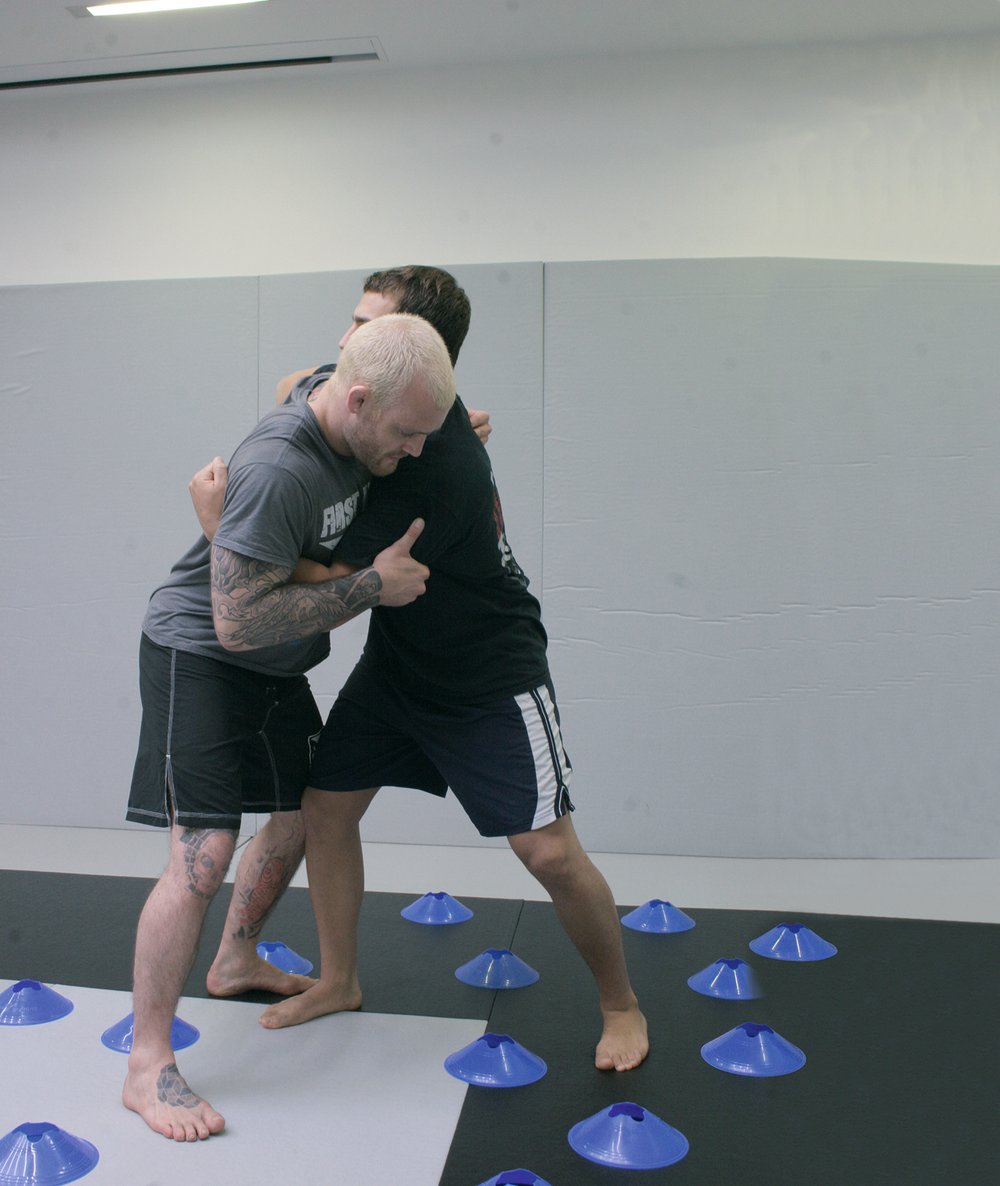

How to play: You’ll need to scatter some plastic athletics cones randomly around your mat area. Tie up in an over-under or collar and elbow. The goal is to move your training partner, and force them to step on one of the cones.
Skills developed: footwork and balance.
Creating motion and predicting where your opponent will step is the key to successful throws. By introducing a physical obstacle you will solidify the concept and become more aware of your own and your opponent’s balance and footwork patterns.
Chasing the tail
Origin: freestyle wrestling
How to play: Take a T-shirt or a hand towel and tuck it into the back of your shorts. The goal is to steal your partner’s ‘tail’ from between the legs. Maintain a deep stance to be ready to shoot and sprawl at all times.
Skills developed: Penetration step, sprawl, stance and foot speed.


